Evaluation of Fracturing Effect of Coalbed Methane Wells Based on Microseismic Fracture Monitoring Technology: A Case Study of the Santang Coalbed Methane Block in Bijie Experimental Zone, Guizhou Province
Abstract
1. Introduction
2. Geological Overview and Coal Reservoir Characteristics of the Coalbed Methane Block on the Northwest Wing of the Santang Synclines
2.1. Geology Overview
2.2. Characteristics of Coal Seam Reservoirs
2.2.1. Division of Exploitable Coal Seams
2.2.2. Characteristics of Coalbed Methane
2.2.3. Reservoir Pressure and In Situ Stress
2.2.4. Reservoir Porosity and Permeability
3. Drilling Engineering Implementation and Results Before Fracturing
3.1. Division of the Construction Area for Production Wells
3.2. Technical Design and Implementation Results of Drilling Engineering
3.2.1. Drilling Engineering
3.2.2. Well Logging Engineering
4. Technical Design of Fracturing Engineering
4.1. Geological Layer Selection Conditions for Fracturing
- Coal seam thickness and gas content:
- 2.
- Coal body structure:
- 3.
- Permeability;
- 4.
- Pressure coefficient difference and pressure/drainage volume ratio.
4.2. Results of the Geological Layer Selection for Fracturing
4.3. Design of the Fracturing Engineering Construction
4.3.1. Perforation Operation Design
4.3.2. Overview of Fracturing
5. Verification of Fracturing Effect of Production Wells Based on Microseismic Fracture Monitoring Technology
5.1. Monitoring Principle
- 1.
- Field microseismic data collection by ground dense arrays;
- 2.
- Tomographic energy scanning inversion calculation;
- 3.
- Interpretation of fracturing fractures by four-dimensional images.
5.2. Microseismic Fracture Monitoring Results
6. Discussion
Controlling Factors for the Differences in the Effects of Fracturing and Modification of Drainage and Production Wells
7. Conclusions
Author Contributions
Funding
Data Availability Statement
Acknowledgments
Conflicts of Interest
References
- Li, H.; Liu, Y.; Wang, W.; Liu, M.; Liu, J.; Ma, J.; Gao, H. A Method of Quick and Safe Coal Uncovering by Hydraulic Fracturing in a Multibranch Radial Hole with a Coalbed Methane Well. ACS Omega 2020, 5, 23672–23686. [Google Scholar] [CrossRef]
- Li, S.; Qin, Y.; Tang, D.; Shen, J.; Wang, J.; Chen, S. A comprehensive review of deep coalbed methane and recent developments in China. Int. J. Coal Geol. 2023, 279, 104369. [Google Scholar] [CrossRef]
- Li, G.; Zhang, S.; Ji, C.; Li, J.; Wang, C. Mechanism and technical system of ground and underground combined drainage of CBM in “four region linkage” in coal mining area. Coal Sci. Technol. 2022, 50, 14–25. [Google Scholar] [CrossRef]
- Zhang, L.S.; Shan, Y.F. Quantitative Analysis of Fracture Roughness and Multi-Field Effects for CO2-ECBM Projects. Energies 2024, 17, 2851. [Google Scholar] [CrossRef]
- Fan, L.; Xu, J. Authority–enterprise equilibrium based mixed subsidy mechanism for carbon reduction and energy utilization in the coalbed methane industry. Energy Policy 2020, 147, 111828. [Google Scholar] [CrossRef]
- He, Y.; Li, X.; Cai, J.; Chen, S.; Li, X. Study of Key Factors for Efficient Coalbed Methane Extraction: Pore Structure, Desorption Rate and Seepage Characteristics. Langmuir 2025, 41, 6020–6036. [Google Scholar] [CrossRef]
- Wu, X.; Sun, Z.; Yang, T.; Wang, S.; Zhang, W. Global Progress in Exploration and Development of Unconvetional Hydrocarbons and Assessment of Resources Potential. Mar. Geol. Front. 2020, 36, 1–17. [Google Scholar]
- Xiong, X.; Yan, X.; Xu, F.; Li, S.; Nie, Z.; Feng, Y.; Liu, Y.; Chen, M.; Sun, J.; Zhou, K.; et al. Analysis of multi-factor coupling control mechanism, desorption law and development effect of deep coalbed methane. Acta Pet. Sin. 2023, 44, 1812–1826, 1853. [Google Scholar] [CrossRef]
- Fang, D.; Cheng, Z.; Li, J. Eefficient fracturing technology and fine drainage system of ultra-deep coalbed methane in southeast Chongqing: A case study of NY1 well. Coal Geol. Explor. 2022, 50, 50–56. [Google Scholar]
- Jiang, B.; Wang, L. Evaluation and prediction method of tectonodynamics in fracture development law of coal reservoir. Coal Sci. Technol. 2015, 43, 16–20. [Google Scholar] [CrossRef]
- Zhao, F.; Sun, Z.; Sang, S.; Zhou, X.; Han, Z.; Zhao, L. Progress of Coalbed Methane Exploration and Development in Guizhou Province and the “14th Five-Year Plan” Development Strategy. Nat. Gas Ind. 2022, 42, 65–75. [Google Scholar] [CrossRef]
- Zhou, P.; Gao, W.; Deng, L.; Fu, W. Regional distribution and geotectonic control of Late Permian tectonically deformed coal in Zhina coalfield. Coal Geol. Explor. 2020, 48, 29–34. [Google Scholar] [CrossRef]
- Qiu, W.; Sang, S.; Guo, Z.; Han, S.; Zhou, X.; Zhou, P.; Wu, Z.; Sang, G.; Zhang, B.; Gao, W. Characteristics of stratified coal reservoirs in Liupanshui coalfield of Guizhou Province and exploration and development direction of coalbed methane. Pet. Reserv. Eval. Dev. 2024, 14, 959–966. [Google Scholar]
- Zhou, A.; Li, J.; Gong, W.; Wang, K.; Du, C. Theoretical and numerical study on the contribution of multi-hole arrangement to coalbed methane extraction. Energy 2023, 284, 128598. [Google Scholar] [CrossRef]
- Wang, L.; Zhu, L.; Xue, Y.; Cao, X.; Liu, G. Multiphysics modeling of thermal–fluid–solid interactions in coalbed methane reservoirs: Simulations and optimization strategies. Phys. Fluids 2025, 37, 076649. [Google Scholar] [CrossRef]
- Liu, Y.; Xu, H.; Tang, D.; Mathews, J.P.; Zhai, Y.; Hou, W.; Li, S.; Tao, S.; Xiong, X.; Wang, W. The impact of the coal macrolithotype on reservoir productivity, hydraulic fracture initiation and propagation. Fuel 2019, 239, 471–483. [Google Scholar] [CrossRef]
- Liu, J.; Su, Y.; Sun, L.; Li, C.; Wang, L.; Meng, Y.; Li, Y. Research on Fracturing Optimization of Coalbed Methane Wells Aiming at Economic Benefit-A Case Study of Liulin Block. Energies 2024, 17, 1829. [Google Scholar] [CrossRef]
- Wang, L.; Zhu, L.; Cao, Z.; Liu, J.; Xue, Y.; Wang, P.; Cao, X.; Liu, Y. Thermo-mechanical degradation and fracture evolution in low-permeability coal subjected to cyclic heating–cryogenic cooling. Phys. Fluids 2025, 37, 086617. [Google Scholar] [CrossRef]
- Li, X.; Tian, Y.; Li, Z.; Heng, S.; Zhang, X.; Liu, B. A new technical approach for real-time tensile strength testing of high-temperature granite based on micro-tensile testing technology. Int. J. Min. Sci. Technol. 2025, 35, 1323–1339. [Google Scholar] [CrossRef]
- Wang, Y.F.; He, X.Q.; Wang, E.-Y.; Li, Y.-Z. Research progress and development tendency of the hydraulic technology for increasing the permeability of coal seams. J. China Coal Soc. 2014, 39, 1945–1955. [Google Scholar]
- Sun, J.; Gamboa, E.S.; Schechter, D.; Rui, Z. An integrated workflow for characterization and simulation of complex fracture networks utilizing microseismic and horizontal core data. J. Nat. Gas Sci. Eng. 2016, 34, 1347–1360. [Google Scholar] [CrossRef]
- Zhu, Q.; Feng, Y.; Cai, M.; Liu, J.; Wang, H. Interpretation of the extent of hydraulic fracturing for rockburst prevention using microseismic monitoring data. J. Nat. Gas Sci. Eng. 2017, 38, 107–119. [Google Scholar] [CrossRef]
- Yu, R.; Qian, J.; Liu, L.; Zha, H.; Li, N. Microseismic Precursors of Coal Mine Water Inrush Characterized by Different Waveforms Manifest as Dry to Wet Fracturing. Int. J. Environ. Res. Public Health 2022, 19, 14291. [Google Scholar] [PubMed]
- Shu, L.; Liu, Z.; Wang, K.; Zhu, N.; Yang, J. Characteristics and Classification of Microseismic Signals in Heading Face of Coal Mine: Implication for Coal and Gas Outburst Warning. Rock Mech. Rock Eng. 2022, 55, 6905–6919. [Google Scholar] [CrossRef]
- Cui, F.; Dong, S.; Lai, X.; Chen, J.; Cao, J.; Shan, P. Study on Rule of Overburden Failure and Rock Burst Hazard under Repeated Mining in Fully Mechanized Top-Coal Caving Face with Hard Roof. Energies 2019, 12, 4780. [Google Scholar] [CrossRef]
- Zhang, E.; Zhu, H.; Liu, J.; Gao, L. Microseismic response characteristics of overlying strata failure and unusual gas emissions in deep mining. Eng. Fract. Mech. 2025, 327, 111498. [Google Scholar] [CrossRef]
- Zhang, E.; Zhou, B.; Yang, L.; Li, C.; Li, P. Experimental study on the microseismic response characteristics of coal and gas outbursts. Process Saf. Environ. Prot. 2023, 172, 1058–1071. [Google Scholar] [CrossRef]


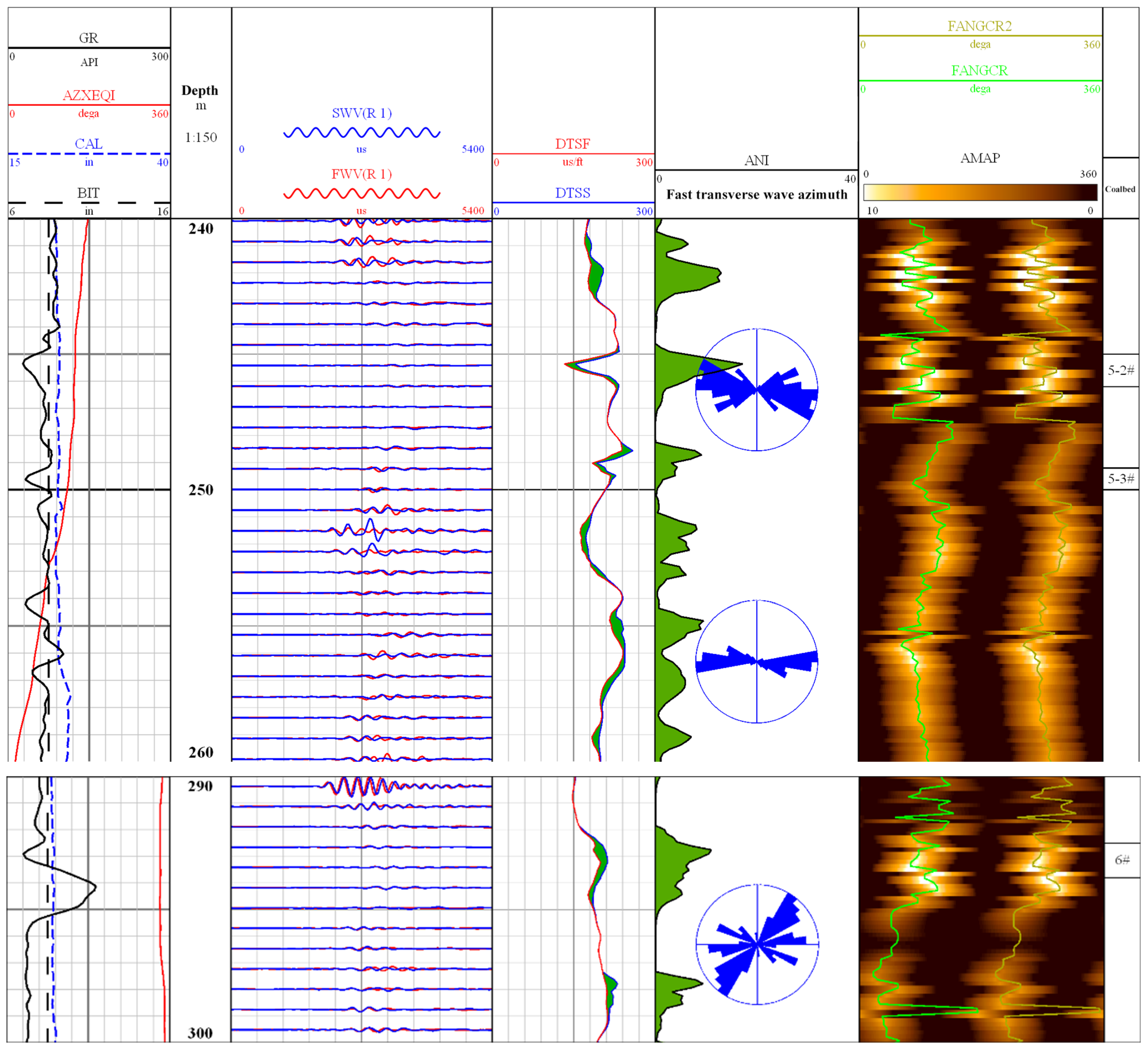
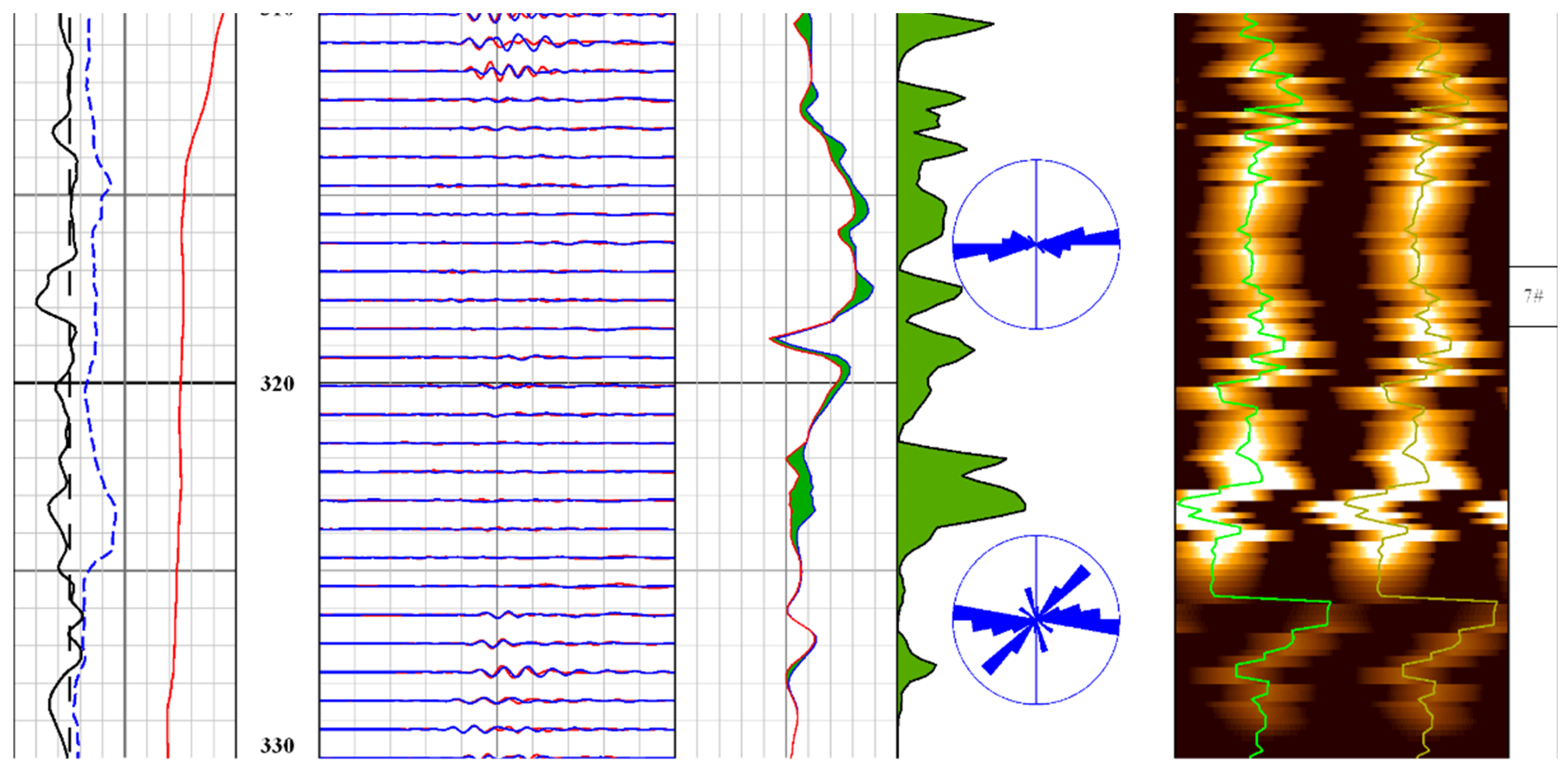


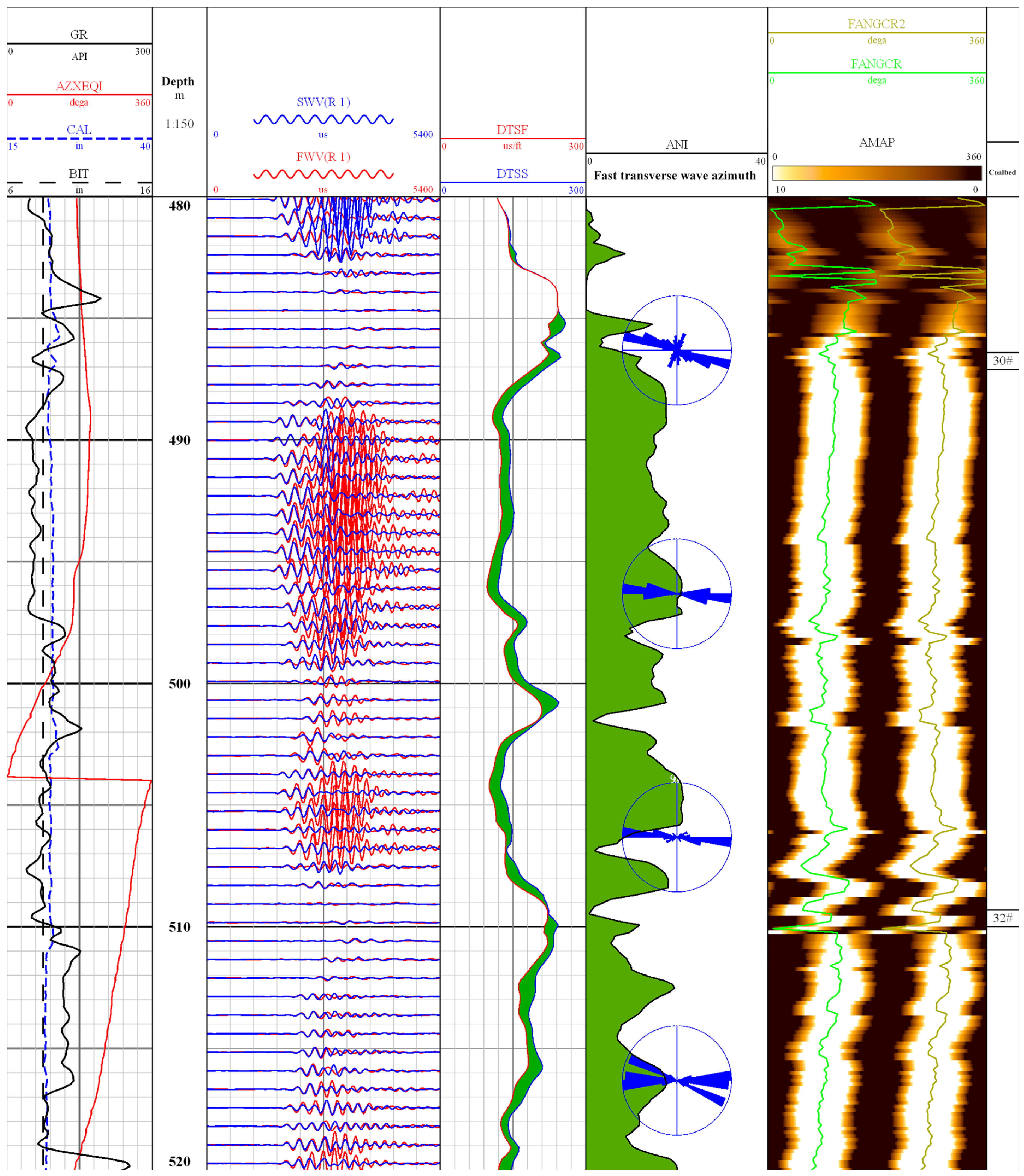
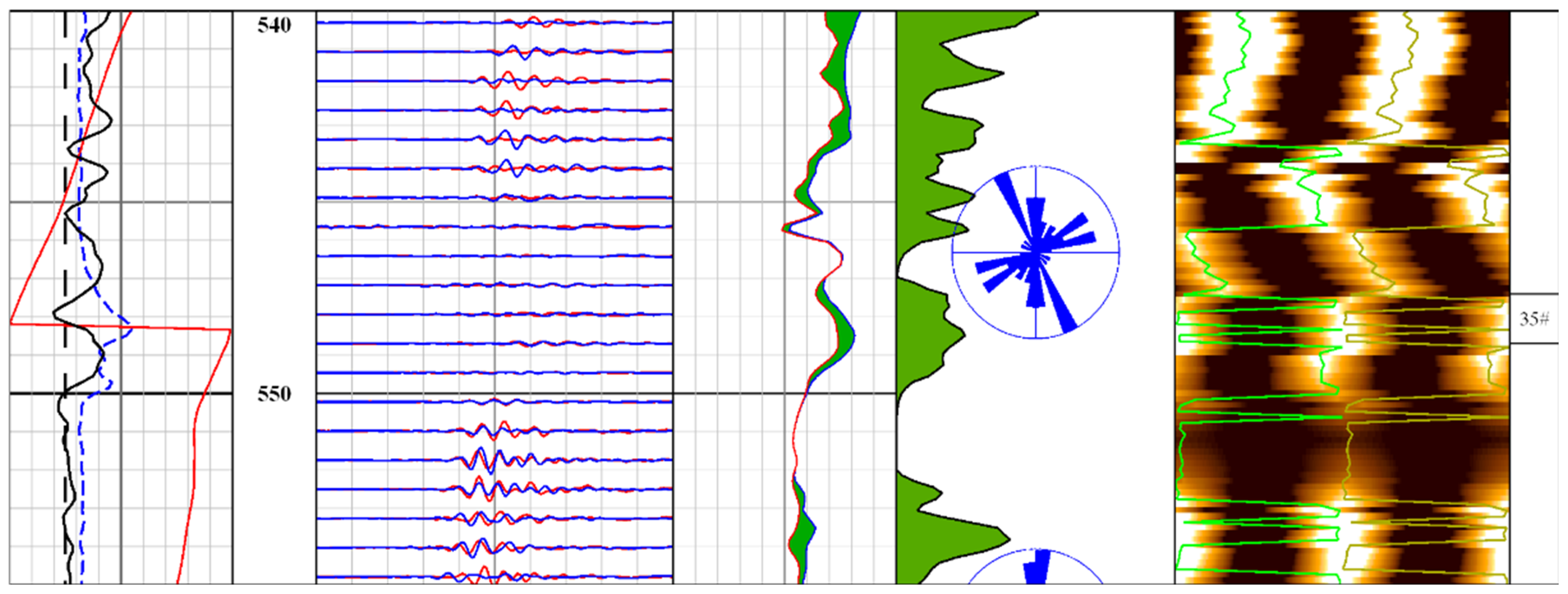
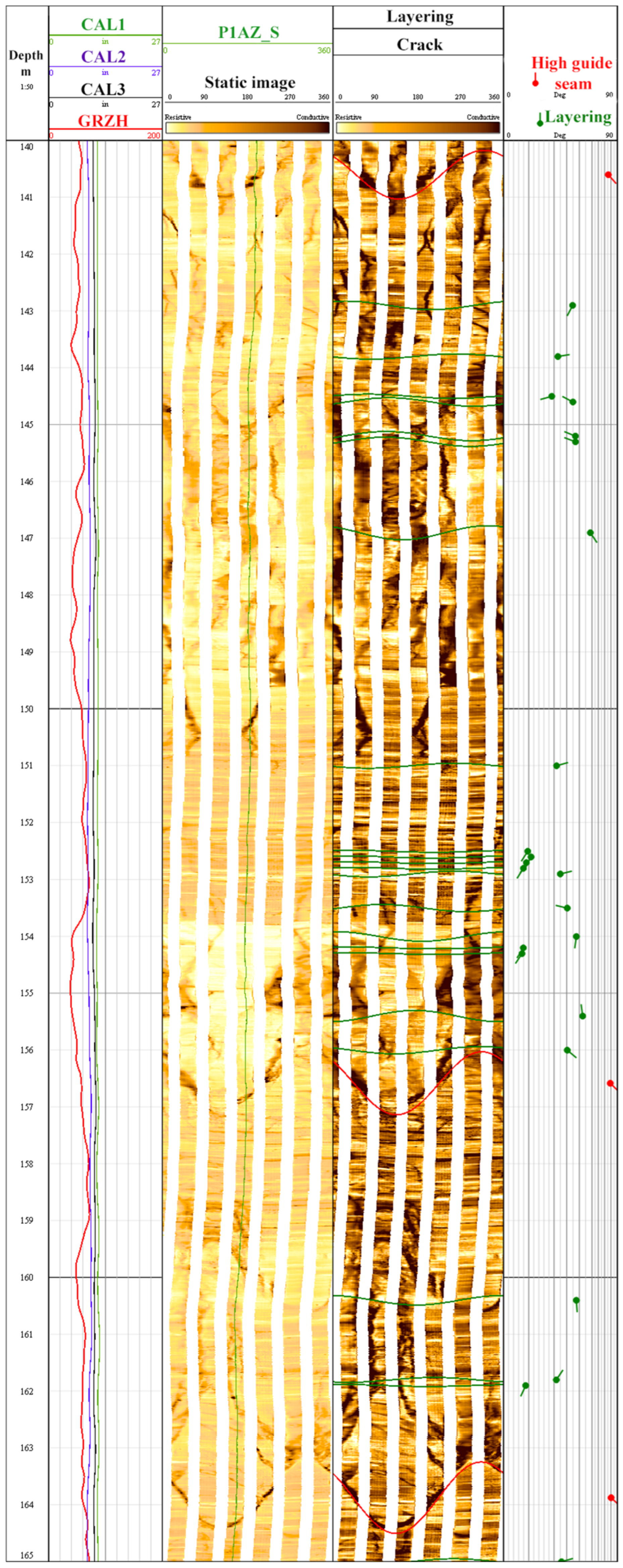
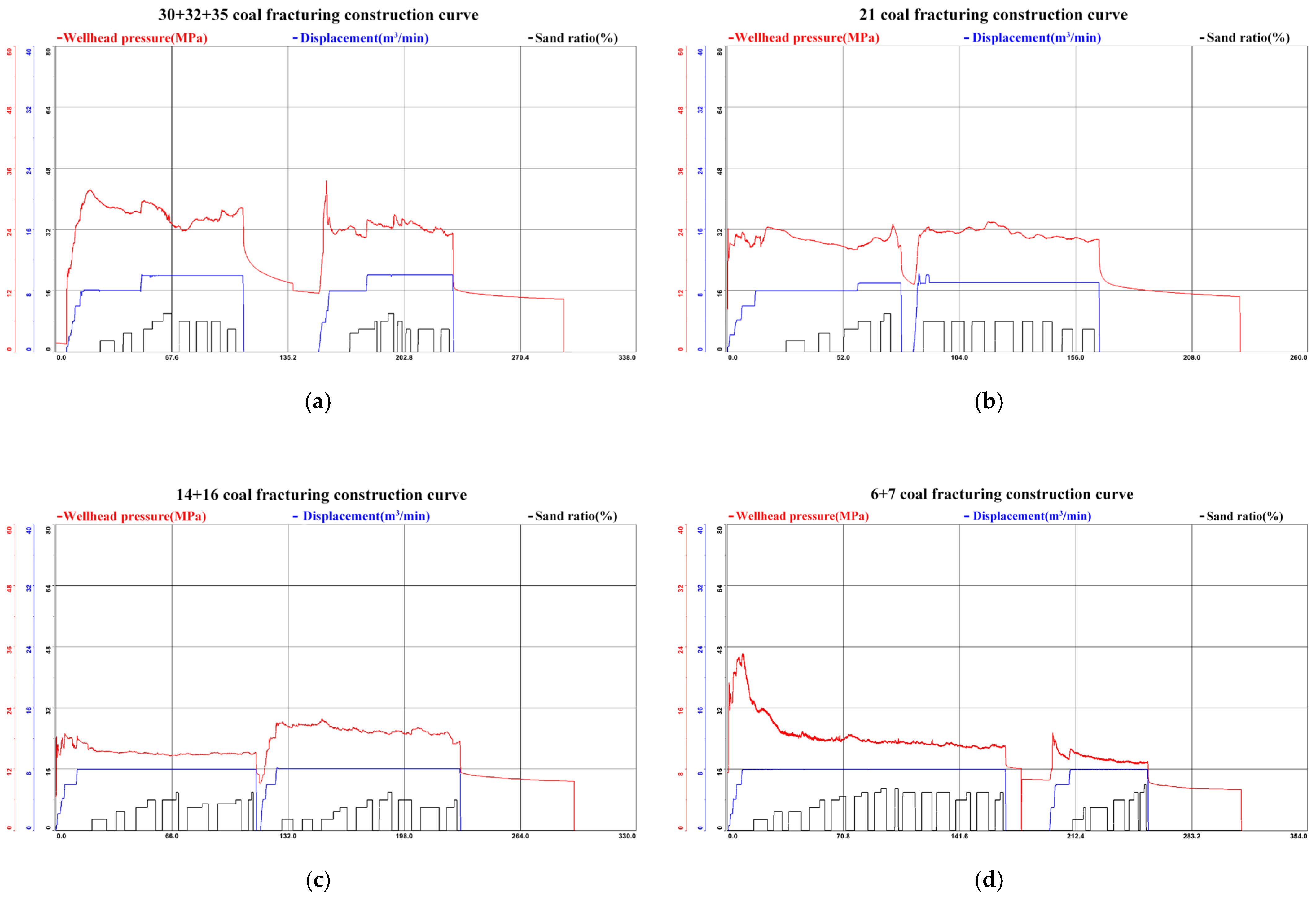

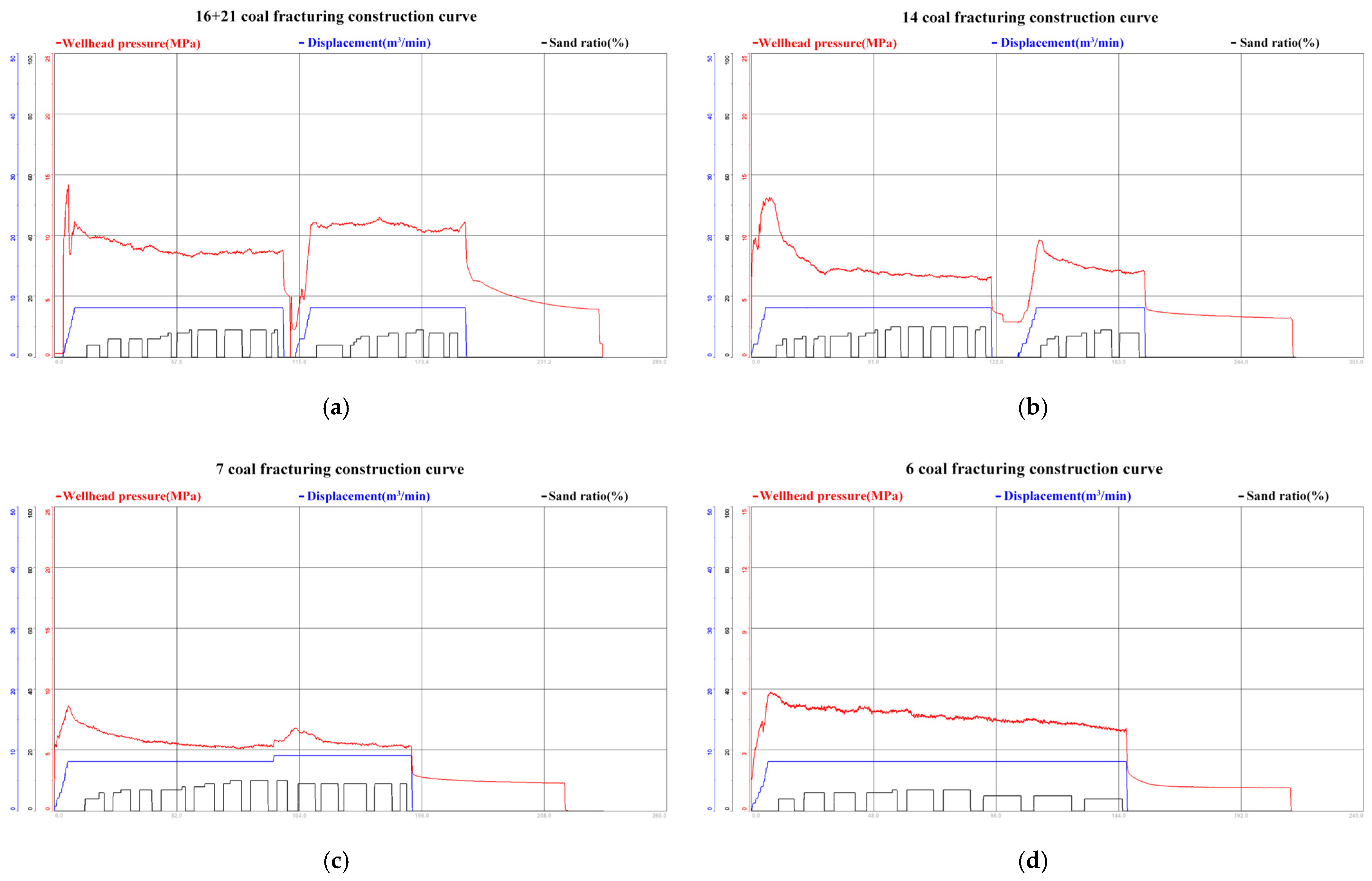
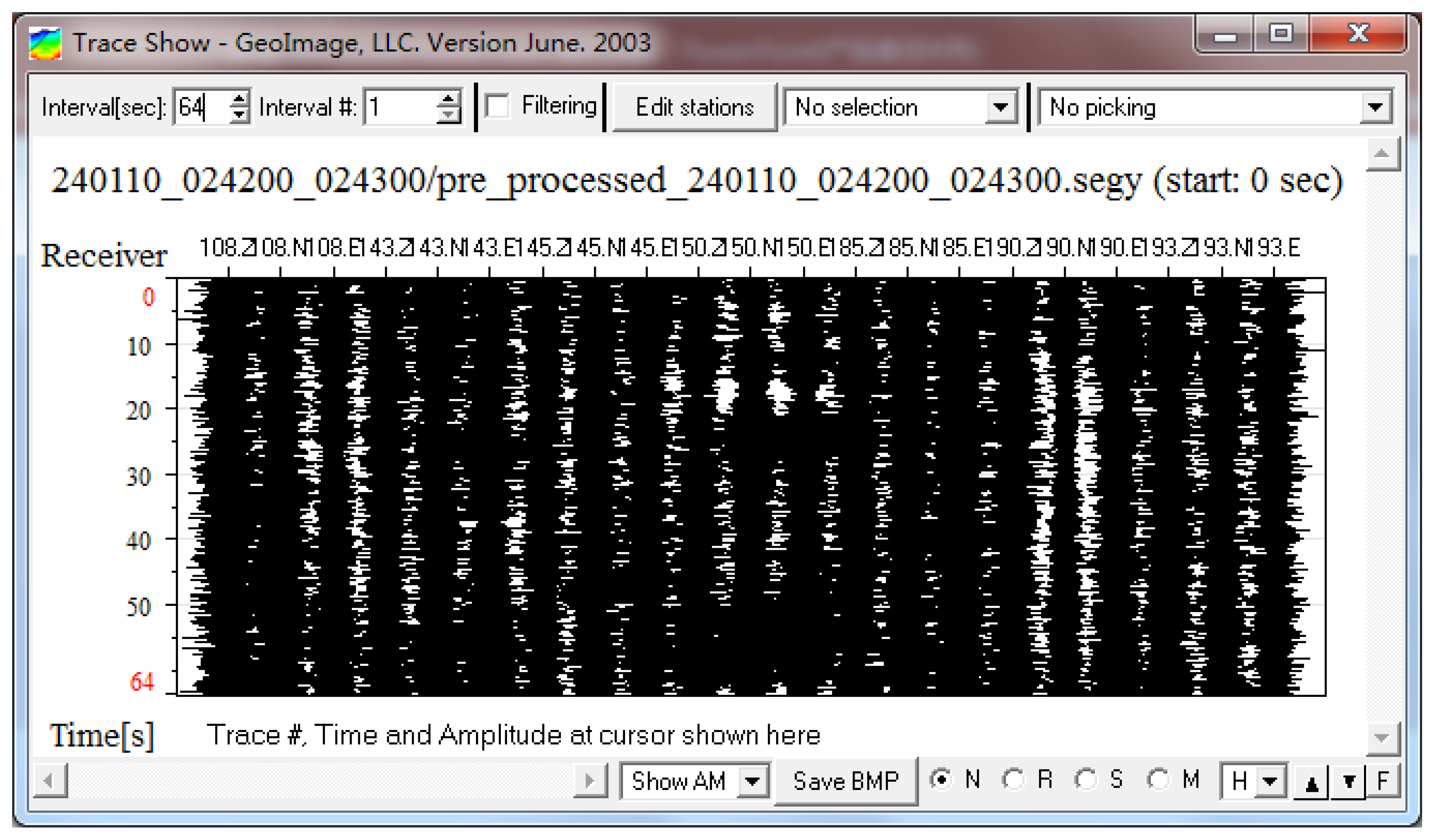


| Coal Seam | Average Composition of Coalbed Methane (%) | Average Content of Coalbed Methane (mL/g·daf) | ||||
|---|---|---|---|---|---|---|
| N2 | CH4 | CO2 | N2 | CH4 | Combustible Gas | |
| 5−2 | 3.77 | 80.21 | 6.52 | 1.2 | 8.28 | 8.65 |
| 5−3 | 4.63 | 74.38 | 17.95 | 1.04 | 9.04 | 9.13 |
| 6 | 6.87 | 93.214 | 1.12 | 1.42 | 11.48 | 11.5 |
| 7 | 9.00 | 80.07 | 6.82 | 2.41 | 10.64 | 10.92 |
| 14 | 7.47 | 89.45 | 2.41 | 1.67 | 12.70 | 12.77 |
| 16 | 5.92 | 86.16 | 7.74 | 1.77 | 12.39 | 12.31 |
| 21 | 4.95 | 89.69 | 3.90 | 2.4 | 13.07 | 13.16 |
| 30 | 8.29 | 89.01 | 2.45 | 2.88 | 16.68 | 16.73 |
| 32 | 11.63 | 83.18 | 4.87 | 2.71 | 11.77 | 11.79 |
| 35 | 12.42 | 73.53 (2) | 13.49 | 3.52 | 12.68 | 12.72 |
| the whole region | 7.36 | 84.2 | 6.41 | 2.04 | 11.58 | 11.7 |
| Well Number | Well Section (m) | Drilling Fluid System | Properties of Drilling Fluid | |||
|---|---|---|---|---|---|---|
| Relative Density (g/cm3) | Viscosity (s) | Fluid Loss (mL) | pH Value | |||
| Well A | First stage | Bentonite slurry | 1.00~1.10 | 12~50 | 8 | 8.0 |
| Second stage | Low-solid-phase polymers | 1.02~1.04 | 18~22 | 8 | 8.0 | |
| Well B | First stage | Bentonite slurry | 1.02~1.04 | 19~32 | 8 | 8.0 |
| Second stage | Low-solid-phase polymers | 1.02~1.05 | 19~22 | 8 | 8.0 | |
| Well C | First stage | Bentonite slurry | 1.05 | 20 | 8 | 8.0 |
| Second stage | Low-solid-phase polymers | 1.05 | 20 | 8 | 8.0 | |
| Category | Index | Threshold |
|---|---|---|
| Resource condition | Coalbed gas content | >10 m3/t |
| Thickness of coal seam | >1 m | |
| Stability of coal seam | Relatively stable, stable | |
| Development condition | Coal body structure | Original and fragmented structures |
| Permeability | The same order of magnitude | |
| Pressure coefficient difference | ≤0.2 | |
| Ratio of critical desorption pressure to reservoir pressure | ≤0.2 | |
| Coal seam spacing | ≤100 m | |
| Burial depth | <1000 m |
| Coal Seam Number | Optical Characteristics | Mechanical Characteristics | Macroscopic Coal and Rock Composition and Types | Development of Fractures | Coal Body Structure | Core Photo |
|---|---|---|---|---|---|---|
| 5−2 | Black, with a metallic luster | Even fracture | Semi-bright | Micro-fissures, pores and joints are well developed with tiny cracks connecting the pores | Fragmented, blocky | 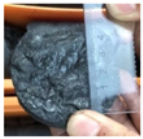 |
| 5−3 | Black, with a metallic luster | Stepped fracture | Semi-bright | Micro-fissures, pores and joints are well developed with tiny cracks connecting the pores | Blocky | 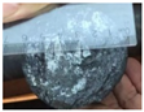 |
| 6 | Black, with a metallic luster | Uneven fracture | Semi-bright | Pores are developed. Joints have good connectivity. Micro-fractures are developed with good connectivity and filled with debris | Fragmented, blocky |  |
| 7 | Black, with a metallic luster | Stepped fracture | Semi-bright | The pores are well developed. Some are filled with flaky debris and there are few micro-fractures | Blocky | 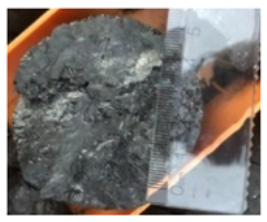 |
| 14 | Black, asphalt luster | Stepped fracture | Semi-dull—semi-bright | Pores are developed. Joints have good connectivity. Micro-fractures are developed with good connectivity and filled with debris | Blocky | 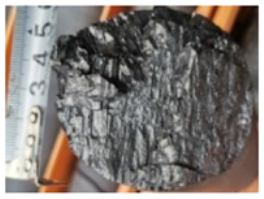 |
| 16 | Black | Stepped fracture | Semi-dull | Well-developed pores and joints, wide fractures, partly filled, with good gas migration channels and pore-fracture connectivity | Blocky |  |
| 21 | Black | Stepped fracture | Semi-bright | Larger fractures with good connectivity, partially filled and blocked by debris | Blocky | 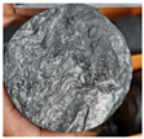 |
| 30 | Black, asphalt luster | Stepped fracture | Semi-dull | Pores are developed. Joints have good connectivity. Micro-fractures are developed with good connectivity and filled with debris | Blocky |  |
| 32 | Black, asphalt luster | Stepped fracture | Semi-dull | There are some continuous fractures filled with debris on the surfaces | Blocky |  |
| 35 | Black, asphalt luster | Stepped fracture | Semi-dull | Larger fractures with good connectivity, partially filled and blocked by debris | Blocky | 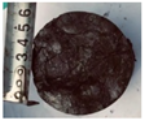 |
| Production Wells | Section Number | Fracture Length (m) | Aspect Ratio of Fracture Network | Fracture Area (m2) | Number of Fracture Activities | Total Fluid Volume (m3) |
|---|---|---|---|---|---|---|
| Well A | 1 | 135 | 0.88 | 12,363.58 | 32 | 1618.27 |
| 2 | 186 | 0.79 | 27,446.86 | 39 | 1348.74 | |
| 3 | 182 | 0.74 | 13,208.63 | 45 | 1765.86 | |
| 4 | 231 | 0.58 | 17,297.79 | 55 | 1768.69 | |
| Well B | 1 | 205 | 0.31 | 12,570.59 | 31 | 1265.92 |
| 2 | 211 | 0.47 | 16,773.92 | 35 | 1389.72 | |
| 3 | 251 | 0.49 | 30,351.00 | 39 | 1288.79 | |
| 4 | 230 | 0.47 | 20,994.05 | 37 | 1347.5 | |
| Well C | 1 | 230 | 0.40 | 17,620.60 | 34 | 1451.45 |
| 2 | 296 | 0.35 | 34,857.03 | 44 | 1419.26 | |
| 3 | 264 | 0.39 | 28,603.55 | 34 | 1268.45 | |
| 4 | 264 | 0.41 | 28,605.48 | 32 | 1169.48 |
Disclaimer/Publisher’s Note: The statements, opinions and data contained in all publications are solely those of the individual author(s) and contributor(s) and not of MDPI and/or the editor(s). MDPI and/or the editor(s) disclaim responsibility for any injury to people or property resulting from any ideas, methods, instructions or products referred to in the content. |
© 2025 by the authors. Licensee MDPI, Basel, Switzerland. This article is an open access article distributed under the terms and conditions of the Creative Commons Attribution (CC BY) license (https://creativecommons.org/licenses/by/4.0/).
Share and Cite
Wang, S.; Wu, C.; Zheng, P.; Zheng, J.; Zhao, L.; Fu, Y.; Li, X. Evaluation of Fracturing Effect of Coalbed Methane Wells Based on Microseismic Fracture Monitoring Technology: A Case Study of the Santang Coalbed Methane Block in Bijie Experimental Zone, Guizhou Province. Energies 2025, 18, 5708. https://doi.org/10.3390/en18215708
Wang S, Wu C, Zheng P, Zheng J, Zhao L, Fu Y, Li X. Evaluation of Fracturing Effect of Coalbed Methane Wells Based on Microseismic Fracture Monitoring Technology: A Case Study of the Santang Coalbed Methane Block in Bijie Experimental Zone, Guizhou Province. Energies. 2025; 18(21):5708. https://doi.org/10.3390/en18215708
Chicago/Turabian StyleWang, Shaolei, Chuanjie Wu, Pengyu Zheng, Jian Zheng, Lingyun Zhao, Yinlan Fu, and Xianzhong Li. 2025. "Evaluation of Fracturing Effect of Coalbed Methane Wells Based on Microseismic Fracture Monitoring Technology: A Case Study of the Santang Coalbed Methane Block in Bijie Experimental Zone, Guizhou Province" Energies 18, no. 21: 5708. https://doi.org/10.3390/en18215708
APA StyleWang, S., Wu, C., Zheng, P., Zheng, J., Zhao, L., Fu, Y., & Li, X. (2025). Evaluation of Fracturing Effect of Coalbed Methane Wells Based on Microseismic Fracture Monitoring Technology: A Case Study of the Santang Coalbed Methane Block in Bijie Experimental Zone, Guizhou Province. Energies, 18(21), 5708. https://doi.org/10.3390/en18215708





